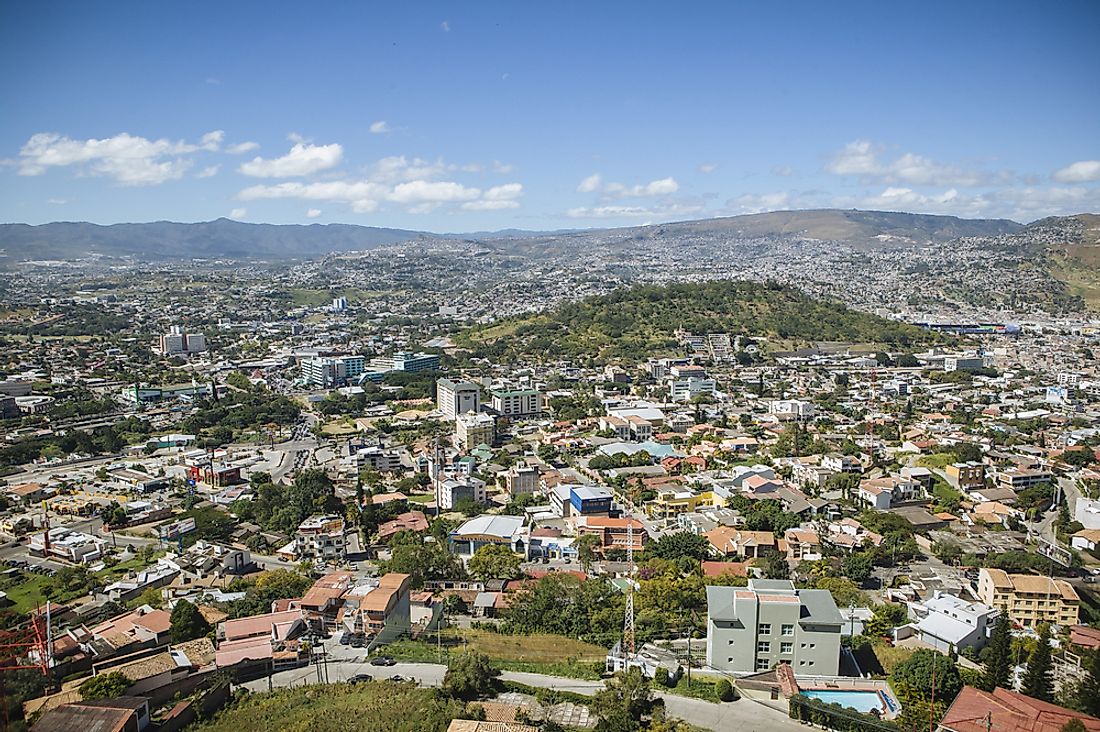What Is The Capital Of Honduras?

Tegucigalpa serves as the capital of Honduras as well as the seat of government of the nation together with its twin sister Comayagüela. The city ranks as the most populous in Honduras with over one million residents. It is also the administrative and political hub of Honduras, and it is home to 25 foreign embassies and an additional 16 consulates.
History Of The Capital City Of Honduras
Tegucigalpa was created by Spanish settlers on September 29, 1578, in a region inhabited by the native Twahkas, Pech, and Tolupans. Among the first buildings constructed in the settlement were the Immaculate Conception Church (1788) and the Dolores Chruch (1735). On June 10, 1762, the settlement became Real Villa de San Miguel de Tegucigalpa y Heredia under the governance of the then governor Alonso Fernández de Heredia. Beginning 1817, the then Mayor Narciso Mallol commissioned the building of a bridge which connected the town to Comayagüela. Tegucigalpa developed into a city in 1821 and on October 30, 1880, it was recognized as the nation's permanent capital. In 1898, it was decided that the capital would be formed by both Tegucigalpa and Comayagüela. Tegucigalpa subsequently experienced population growth which fueled urbanization. Tegucigalpa was devastated by a 1998 hurricane named Mitch. The urbanization process in the city has largely been disorganized, and the government has been trying to rectify this situation.
Geography Of The Capital Of Honduras
The metropolitan region of Tegucigalpa and Comayagüela occupies an area of 77.6 square miles, and the Central District's Municipality has an area of 539.1 square miles. The city is situated on a network of mountains whose elevations fall between 3,199 feet and 4,800 feet above sea level. The region surrounding Tegucigalpa is open woodland characterized by pine, oak, grassy clearings, broadleaf deciduous forest, needle leaf evergreen, and scrub. The Choluteca River cuts across Tegucigalpa from south to north. Tegucigalpa's landscape features gentle hills, and its mountains trap pollution such that a cloud of smog is visible in the dry season. The city is also vulnerable to flooding in rainy seasons.
Demographics Of Tegucigalpa
The Honduras Census of 2013 reported the city’s Central District population as 1,157,509 while the 2000 census identified 850,445 residents. It is projected that by 2029 the metro area of the city’s population would double. Tegucigalpa's illiteracy rate was 4.9% in 2010 while the national rate was 15.2%. The average monthly income was $440.49 in 2010. About 90% of Tegucigalpa's inhabitants are mestizos while a small minority is White-Hispanic. The rest of Tegucigalpa's population includes Arab and Chinese immigrants and native Afro-Hondurans and Amerindians.
Economy Of Tegucigalpa
The Central District contributes 19.3% of the Honduran economy. About 57.9% of the country’s national budget is channeled into the Central District. There are approximately 367,844 active laborers in the District and 56,035 of whom are engaged in the public sector. In 2009, the unemployment rate in Tegucigalpa was 8.1%. Some of Tegucigalpa's main economic sources are sugar, services, tobacco, commerce, textiles, and construction. Maquiladora duty-free assembly factories operate in an industrial park established in the Amarateca Valley. Zinc, silver, and lead continue to be mined in Tegucigalpa's outskirts.
Government Of Tegucigalpa
The capital of Honduras hosts municipal, departmental, and national governments. The Central District, though autonomous, is influenced by the national government as the territory is the Republic’s seat of government. The funding of important city projects and significant changes to public policy are thus presented to the Office of the president before they are approved by the local government of the District.







